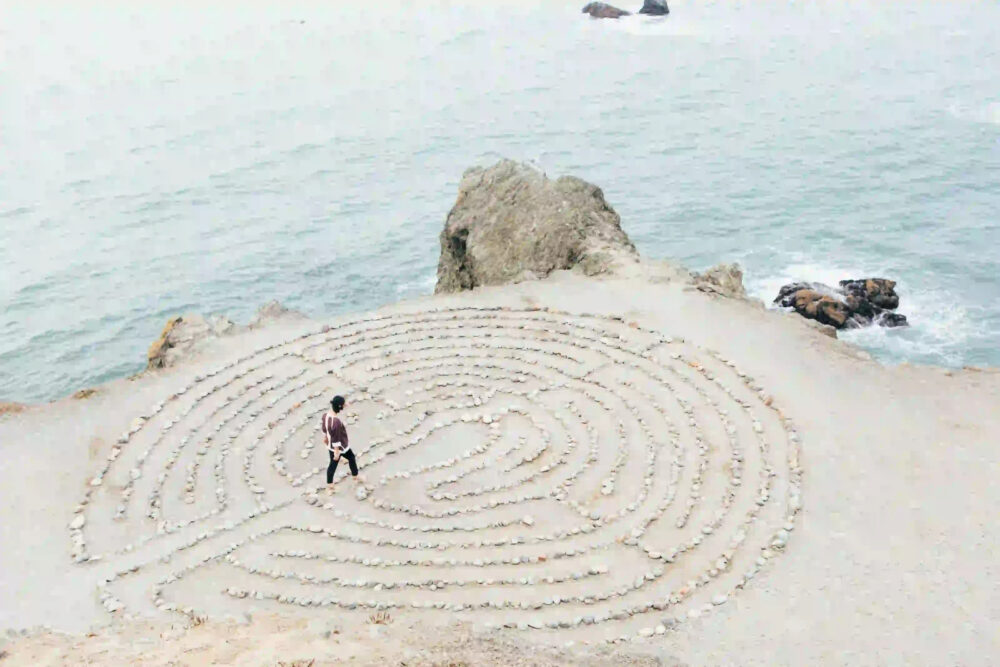Anxiety can be overwhelming, leaving us feeling trapped in a constant state of worry and restlessness. The racing thoughts, the pounding heart, the tightness in the chest – it’s like being caught in a tornado of fear. But there is a way out. Mindfulness, a practice rooted in ancient wisdom, offers a lifeline for those struggling with anxiety. In this blog post, we will explore how mindfulness can help calm the racing mind and bring peace to our inner world.
Understanding Anxiety
Before we delve into mindfulness techniques, it’s important to understand anxiety and its impact on our mental well-being. Anxiety is a natural response to stress, but for some, it becomes chronic and debilitating. Racing thoughts, excessive worrying, and a constant sense of unease are common symptoms of anxiety. It can interfere with our daily lives, affecting our relationships, work, and overall quality of life.
The Power of Mindfulness
Mindfulness is the practice of being fully present in the moment, without judgment. It involves paying attention to our thoughts, feelings, and bodily sensations with an attitude of curiosity and acceptance. By cultivating mindfulness, we can learn to observe our racing thoughts without getting entangled in them. This shift in perspective allows us to respond to anxiety in a more compassionate and effective way.
Mindfulness Techniques for Calming the Racing Mind
Breath Awareness: One of the simplest yet most powerful mindfulness techniques is breath awareness. Sit in a comfortable position, close your eyes, and bring your attention to your breath. Notice the sensation of the breath as it enters and leaves your body. When your mind starts to wander, gently bring it back to the breath. This practice helps anchor you in the present moment, calming the racing mind.
Body Scan: The body scan is a mindfulness technique that involves systematically bringing attention to different parts of the body. Start from the top of your head and slowly move down, noticing any sensations or tension along the way. By cultivating body awareness, you can release physical tension and bring a sense of grounding to your racing mind.
Thought Labeling: When anxiety takes over, our minds can become flooded with a barrage of thoughts. Thought labeling is a mindfulness technique that involves acknowledging and labeling our thoughts without judgment. As thoughts arise, simply label them as “worry,” “fear,” or “planning.” This practice creates distance between you and your thoughts, reducing their power over your racing mind.
Gratitude Practice: Anxiety often keeps us focused on the negative aspects of our lives. Cultivating a gratitude practice can help shift our attention to the positive. Each day, take a few moments to reflect on three things you are grateful for. It could be as simple as a beautiful sunset or a kind gesture from a friend. This practice trains your mind to notice and appreciate the good, bringing a sense of calm to your racing mind.
Incorporating Mindfulness into Your Daily Life
While these mindfulness techniques are valuable, it’s essential to make mindfulness a part of your daily life. Here are a few tips to help you incorporate mindfulness into your routine:
Start small: Begin with just a few minutes of mindfulness practice each day and gradually increase the duration as you become more comfortable.
Create reminders: Set reminders on your phone or place sticky notes around your home or office to prompt you to pause and engage in mindful awareness.
Find a community: Join a mindfulness group or seek support from like-minded individuals who can provide encouragement and accountability.
Practice self-compassion: Remember that mindfulness is a practice, and it’s normal to have wandering thoughts or moments of restlessness. Be kind to yourself and approach your practice with patience and self-compassion.
Embracing Calmness
By incorporating mindfulness into your life, you can create a sense of calm amidst the chaos of anxiety. Remember, mindfulness is not a quick fix, but a lifelong journey of self-discovery and inner peace. As you continue to cultivate mindfulness, you will find yourself better equipped to calm the racing mind, allowing space for clarity, joy, and a deeper connection with yourself and the world around you.
Note: This blog post is for informational purposes only and should not replace professional medical advice. If you are experiencing severe anxiety, please consult a healthcare professional.
